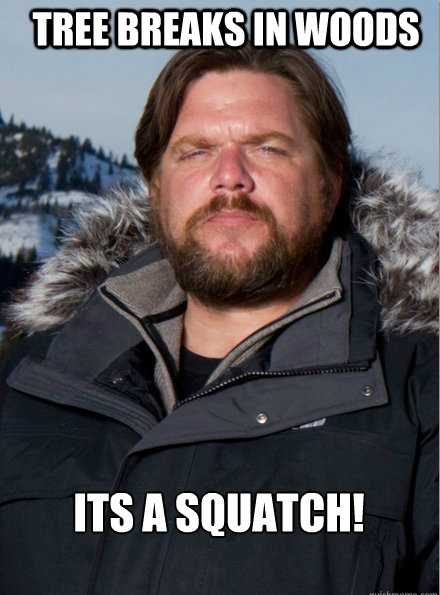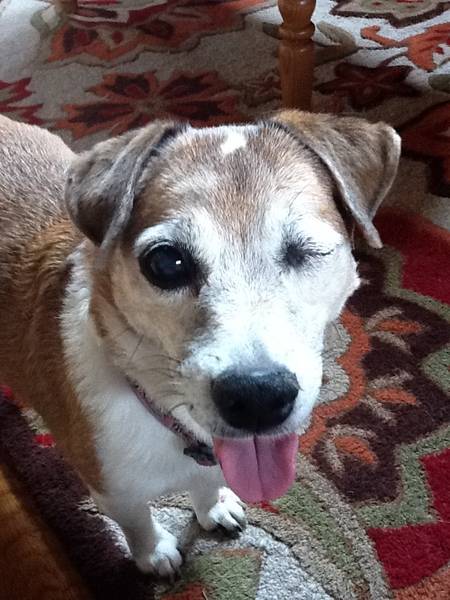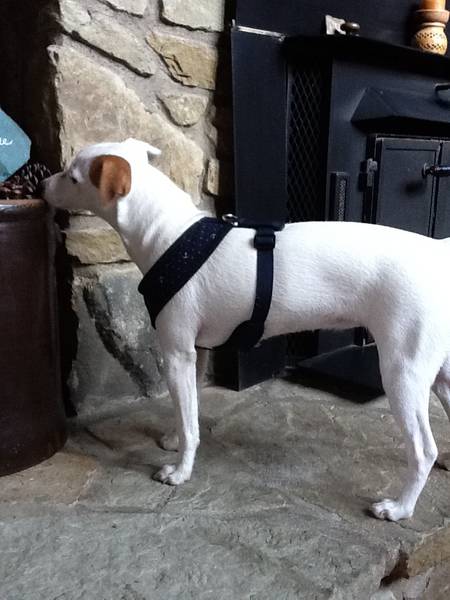From Science Daily:
Coyotes today are pint-sized compared to their Ice Age counterparts, finds a new fossil study. Between 11,500 and 10,000 years ago — a mere blink of an eye in geologic terms — coyotes shrunk to their present size. The sudden shrinkage was most likely a response to dwindling food supply and changing interactions with competitors, rather than warming climate, researchers say.
In a paper appearing this week in Proceedings of the National Academy of Sciences, researchers studied museum collections of coyote skeletons dating from 38,000 years ago to the present day. It turns out that between 11,500 and 10,000 years ago, at the end of a period called the Pleistocene, coyotes in North America suddenly got smaller.
“Pleistocene coyotes probably weighed between 15-25 kilograms, and overlapped in size with wolves. But today the upper limit of a coyote is only around 10-18 kilograms,” said co-author Julie Meachen of the National Evolutionary Synthesis Center in Durham, North Carolina.
“Within just over a thousand years, they evolved into the smaller coyotes that we have today,” she added.
What caused coyotes to shrink? Several factors could explain the shift. One possibility is warming climate, the researchers say. Between 15,000 and 10,000 years ago, global average annual temperatures quickly rose by an average of six degrees. “Things got a long warmer, real fast,” Meachen said.
Large animals are predicted to fare worse than small animals when temperatures warm up. To find out if climate played a role in coyotes’ sudden shrinkage, Meachen and co-author Joshua Samuels of John Day Fossil Beds National Monument in Oregon measured the relationship between body size and temperature for dozens of Ice Age coyotes, and for coyotes living today, using thigh bone circumference to estimate body size for each individual.
But when they plotted body size against coldest average annual temperature for each animal’s location, they found no relationship, suggesting that climate change was unlikely to be the main factor.
If the climate hypothesis is true, then we should see similar changes in other Ice Age carnivores too, Meachen added. The researchers also studied body size over time in the coyote’s larger relative, the wolf, but they found that wolf body sizes didn’t budge. “We’re skeptical that climate change at the end of the Pleistocene was the direct cause of the size shift in coyotes,” Meachen said.
Another possibility is that humans played a role. In this view, coyotes may have shrunk over time because early human hunters — believed to have arrived in North America around 13,000 years ago — selectively wiped out the bigger coyotes, or the animals coyotes depended on for food, leaving only the small to survive. Stone tool butchery marks on Ice Age animal bones would provide a clue that human hunters had something to do with it, but the fossil record has turned up too few examples to test the idea. “Human hunting as the culprit is really hard to dispute or confirm because there’s so little data,” Meachen said.
A third, far more likely explanation, is dwindling food supply and changing interactions with competitors, the researchers say. Just 1000 years before the sudden shrinkage in coyotes, dozens of other species were wiped out in a wave of extinctions that killed off many large mammals in North America. Until then, coyotes lived alongside a great diversity of large prey, including horses, sloths, camels, llamas and bison. “There were not only a greater diversity of prey species, but the species were also more abundant. It was a great food source,” Meachen said.
While coyotes survived the extinctions, there were fewer large prey left for them to eat. Smaller individuals that required less food to survive, or could switch to smaller prey, would have had an advantage.
Before the die-off, coyotes also faced stiff competition for food from other large carnivores, including a bigger version of wolves living today called the dire wolf. After bigger carnivores such as dire wolves went extinct, coyotes would have no longer needed their large size to compete with these animals for food.
The findings are important because they show that extinction doesn’t just affect the animals that disappear, the researchers say — it has long-term effects on the species that remain as well.
“In a time of increasing loss of biodiversity, understanding the degree to which species interactions drive evolutionary change is important,” says Saran Twombly, program director in the National Science Foundation (NSF)’s Division of Environmental Biology, which supported the research.
“Species interactions are delicate balancing acts. When species go extinct, we see the signature of the effects on the species that remain,” Meachen said.
This is an interesting find, but I need to make some clarifications. There are coyotes that weigh 25 kilos that are alive right now. 25 kilos is 55 pounds, and the record weight for a coyote was somewhere in the neighborhood of 65 pounds. A big Eastern coyote can be over 50 pounds in weight. It’s not necessarily common, but the upper limit for coyote size is higher than this study is claiming. Coyotes in the West tend to be smaller than those in the East, and those in the East are pretty skilled at forming packs and killing deer. Those in the West are smaller, and the smallest individuals are those that live in southern Mexico and Central America, which are in the 15 to 20 pound range.
Wolves also greatly vary in size. The smallest subspecies of wolf in North America is the Mexican wolf (Canis lupus baileyi), and it’s about the size of a golden retriever. The smallest subspecies in Eurasia is the Arabian wolf (Canis lupus arabs) which weighs as little as 25 pounds.
Both wolves and coyotes likely derive from an ancestor that was the size of a modern Western coyote. This ancestor is usually posited as Canis lepophagus, which lived in North America from 10 million to 1.8 million years ago, and it may actually be the ancestor of all dogs in the genus Canis and the two dog that should be in the genus Canis, the African wild dog and the dhole.
In North America and Eurasia, wolf and coyote/jackal sized animals have evolved at different times over those 10 million years.
It’s not clear if the coyote derives solely from ancestors that never left the Americas, or if they derive from Eurasian ancestors that they share with the golden jackal and Ethiopian wolf that came back into North America. The earliest wolf-like Canis that appeared in North America was Canis edwardii, which lived from about 5 million years ago to 300,000 years ago. Canis edwardii has sometimes been posited as an ancestor the red wolf, which we now know to be nothing more than a recent hybrid between the modern wolf and the modern coyote. Others, including Ron Nowak, have contended that the coyote, red wolf, and Holarctic wolf derived from the later Eurasian wolf known as Canis mosbachensis.
Now, all of these have been posited, but there is another evolutionary tree that has been posited for evolution of Canis, which someone on Wikipedia managed to put together. It’s not made up. It actually comes from Tedford and Wang’s analysis of how Canis evolved in North America (Tedford and Wang pdf).
In this analysis, the ancestor of all Canis is Canis ferox, a species that was endemic to Central Mexico from 10.3 to 5.3 million years ago. In this analysis, the species is the ancestor of the African wild dog, Xenocyon lycanoides, is also derived from Canis ferox. The dhole is probably derived from this ancestor, too. The close relationship with these two extant species and the interfertile Canis strongly suggests that they should be included in the genus Canis. And so should Xenocyon.
Xenocyon was a wolf before there was a wolf. It hunted large prey, while the smaller Canis species, like Canis mosbachensis, were forced to have something like the Western coyote and golden jackal niche. In How the Dog Became the Dog, Mark Derr uses Nowak’s paradigm to claim that that the extinction of large Xenocyon from Eurasia gave the Canis mosbachensis an opportunity to fill the wolf niche. This is precisely the niche that Eastern coyotes are filling in the absence of wolves.
With this analysis, the large wolf lineage begins in Asia. The ancestor of Armbruster’s wolf (Canis armbrusteri), which is the ancestor of the dire wolf, is derived from the same lineage as Canis lupus. Both of these might actually be nothing more than earlier subspecies of Canis lupus.
So however Canis evolved, it has produced large wolf-like canids and small jackal and Western coyote-like canids at different points in history.
This study shows that modern Western coyotes have evolved a smaller size in response to fewer prey resources and increased competition from Canis lupus in a very short time period. Dogs can change their size relatively rapidly when exposed to selection pressures. We’ve seen this in Eastern coyotes, domestic dogs, and even red foxes in England. So this finding doesn’t surprise me in the least.
The dog family is very successful. Whereas our species has been successful because we rapidly can develop new technology, dogs have been successful because their body size and shape can rapidly adapt through the generations when exposed to new selection pressures.
This is what happened to coyotes at the end of the last Ice Age.
Now let’s see how big Eastern coyotes and British red foxes will get as they adapt to new niches that have been opened up for them in the absence of wolves.
























